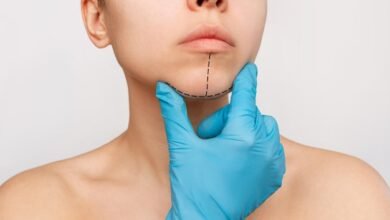
Injuries that are related to bones, joints and soft tissues are called musculoskeletal injuries.
Have you hurt yourself recently in some accident? Learn about first aid and the treatment options available. This article discusses musculoskeletal injuries and treatment in detail, along with other crucial information.
Types of Musculoskeletal Injuries
The following are some of the major injuries related to the musculoskeletal system.
Fractures:
When a bone is broken, it is called a fracture. It is the most common musculoskeletal injury after intense accidents, i.e., road accidents, severe falls, hits, etc.
Dislocation:
A joint is a place where two or more bone ends meet. When, due to harmful external force, these bone ends move away from their right position, it is called dislocation.
The shoulder and hip both are ball-and-socket joints. So, when the ball end of any of these joints moves away from the socket part, it is an example of a joint dislocation.
Sprains:
The human body contains various joints. Each joint has ligaments that provide stability. A ligament attaches one bone to another. An injury to a ligament is called a sprain.
There are three types of ligament injuries (Sprains):
- where the ligament is stretched beyond its capacity to flex (Grade 1)
- where the ligament has torn partially but not completely (Grade 2)
- where the ligament has torn into two completely (Grade 3)
Muscle Injuries:
This is also called strain, and it typically occurs along with other injuries like sprains or fractures. An external injury can damage muscles severely.
Tendinopathy:
There are two types of tendon-related conditions: tendonitis and tendinosis. The former is an acute condition. It happens as a result of an external accident, for example, falling and injuring a tendon.
Tendinosis is, on the other hand, a condition that develops due to the overuse of a tendon due to repetitive damage. This condition especially manifests when proper rest isn’t given to the injured tendon.
Bursitis:
Joints also have fluid-filled bag-like structures that offer extra cushioning. Each such structure is called the bursa. An injury can damage this structure and cause inflammation, which is called bursitis.
Other Soft-Tissue Injuries:
An injury can also cause synovitis, meniscal damage, articular cartilage damage, etc. Such conditions often occur at the same time as other injuries like sprains, fractures, etc.
Pinched Nerve:
An injury to the spine often affects nerve roots, causing nerve impingement or compression. The condition leads to loss of sensation and function down the affected nerve roots.
Causes
The primary cause of a musculoskeletal injury is the application of harmful external force. However, certain conditions are secondary, for example, tendonitis is an acute condition. It develops due to a trauma to the tendon.
But, if this tendon isn’t provided with enough time to heal and proper treatment, it would lead to overuse and tendinosis, which will be considered a secondary condition.
Symptoms
Musculoskeletal injuries cause the following symptoms:
- Pain on the spot of injury
- Radiating pain (due to nerve compression)
- Stiffness
- Instability (Sprains)
- Tenderness
- Swelling
- Redness
- Immobility
Diagnosis
To study how much damage an injury has caused to a person, doctors use imaging tests that are as follows.
X-ray: This test helps learn about bone conditions. But, it doesn’t show any abnormalities or injuries related to soft tissues like muscles, cartilage, ligaments, tendons, etc.
MRI: This test produces detailed images of both bones and soft tissues.
CT Scan: However, patients with metal implants in their bodies aren’t recommended for an MRI test. MRI is an imaging technology that depends on the magnetic field that can interfere with the implant. In this case, CT scanning is used for imaging and diagnosis.
First Aid
Immediately after an injury, don’t forget to follow the first-aid instructions given below.
Rest: Don’t move the injured part so that the injury doesn’t get any worse. Keep it still.
Ice: Take an ice pack and apply it to the affected area. It helps reduce post-injury swelling.
Compression: Take the compression bandage and wrap it around the injured part. Ensure that you don’t compress too tightly or loosely; keep it in the right pressure.
Elevation: Put the injured part at some height. Compression and elevation both also help reduce swelling.
With these simple instructions, your injury will heal itself after a few days. But, if the pain doesn’t go away and you experience the same amount of discomfort, consult an orthopedic doctor for the most accurate treatment.
Treatment Options
Doctors can treat the musculoskeletal injuries with the help of the following.
Medicines:
To relieve the pain from injury, painkillers and steroid injections can be recommended. If you want to connect with a sports injury specialist, visit the following link: sports medicine doctor in Delhi.
Physiotherapy:
This therapy aims at boosting the body’s healing capacity via exercises and manual therapies like the application of heat, massages, manipulation, hand manoeuvres etc. This therapy also strengthens the injured part, which prevents future injuries.
PRP:
This is the abbreviation for Platelet-Rich Plasma. It is a biologic therapy. This therapy helps boost the healing capacity of the injured part. PRP is often administered when the injured part doesn’t seem to heal itself.
Under this therapy, the patient’s blood is taken and centrifuged to extract the platelet-rich plasma (PRP), a part of the blood. Platelets contain certain growth factors, which can promote cell regeneration in the injured part of the body.
After extraction, PRP is injected into the affected part, which promotes healing of the damaged tissue.
Stem Cell Therapy:
It also aims at promoting the repair response of the injured tissue like PRP. But, in this therapy, stem cells are injected into the site of injury rather than plasma with a high platelet concentration.
Once injected into the injured tissue, stem cells repair the damage and promote tissue regeneration. Stem cells have unique characteristics. They can transform into a variety of other cells and repair tissue damage.
Immobilisation:
This is the most effective non-surgical treatment for mild fractures. The broken bone is immobilised through a cast or splint, whichever is best. Immobilisation helps the fracture heal itself over time.
Reduction:
Sometimes, to treat a fracture or dislocation, the doctor has to perform closed reduction before immobilisation. Reduction is a procedure where the broken parts of the bone are realigned with hands and once the alignment is set, the bone is immobilised through a cast or splint so it can heal itself.
Surgery:
If a musculoskeletal injury is so intense that it cannot be treated with non-surgical conservative options, surgery becomes inevitable.
Common examples of such surgeries are the repair of a severely fractured bone through internal or external fixation, ACL reconstruction surgery, cartilage repair surgery, meniscectomy (removal or trimming of the rough regions of a meniscal tear), etc.
Conclusion
Injuries related to the musculoskeletal system (bones, muscles, joints and connective tissues) are called musculoskeletal injuries. Such injuries are common among athletes or during sports.
If the first aid doesn’t seem to be of much help, consult the right doctor on time. Book an appointment with an orthopedist. Visit the following link to connect with the best doctor: top 10 orthopedic doctors in India.



